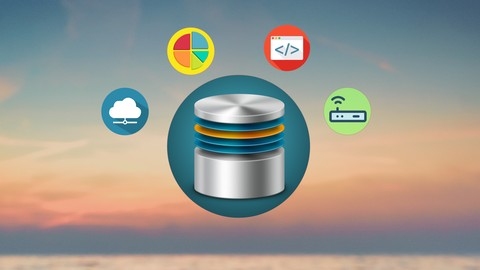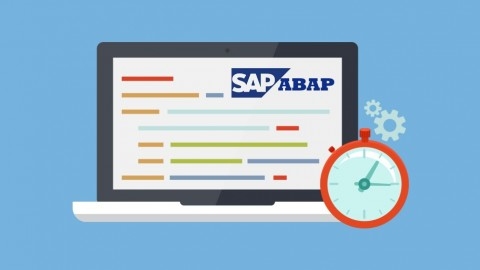SAP, a leading enterprise resource planning (ERP) software, is a powerful tool that can streamline business processes, optimize operations, and improve decision-making.
Mastering SAP can unlock a range of career opportunities in finance, logistics, supply chain management, and more.
Whether you’re a complete beginner or have some prior experience, learning SAP can open doors to a fulfilling career in a dynamic and ever-evolving industry.
Finding the right SAP course on Udemy can be a challenge, however.
With so many courses available, it’s easy to get overwhelmed and unsure where to start.
You’re looking for a course that’s comprehensive, engaging, and taught by experts, but also fits your learning style and goals.
For the best SAP course overall on Udemy, we recommend SAP Simplified for Absolute Beginners.
This course provides a well-structured introduction to SAP ERP, covering the fundamentals, key concepts, and practical applications.
You’ll learn how to access SAP via the SAP GUI, understand the system’s architecture, create master and transactional data, and explore essential functionalities like customizing and reporting.
This course is ideal for those new to SAP, providing a strong foundation for further learning.
While SAP Simplified for Absolute Beginners is our top pick, Udemy offers a wide array of SAP courses tailored to different learning levels and career goals.
Keep reading to discover our recommendations for various SAP modules, including S/4HANA, ABAP, MM, SD, FICO, and more.
SAP Simplified for Absolute Beginners
This “SAP Simplified for Absolute Beginners” course is a well-structured introduction to the world of SAP ERP.
You’ll embark on a journey starting with the fundamentals, gaining a clear understanding of what SAP ERP is, its visual structure, and its crucial role in businesses.
The course guides you through accessing SAP via the SAP GUI, teaching you how to log in and out of the system.
You’ll explore key concepts like customizing, allowing you to tailor SAP to your company’s unique needs.
You’ll learn how to map your company’s organizational chart within SAP ERP, and gain mastery over creating master and transactional data, essential for everyday business operations.
Practical exercises like creating purchase requisitions and printing documents will solidify your understanding.
Moving beyond the basics, you’ll delve into the importance of documents in SAP, recognizing the difference between “Create” and “Change” transactions.
You’ll discover how to call and execute reports efficiently.
The course then takes you deeper, explaining the SAP System Landscape and how changes are managed within it.
You’ll be introduced to ABAP, the programming language behind SAP customization and extension, and explore the concept of authorization, ensuring secure access to the system.
The course even provides a comprehensive overview of the diverse range of SAP products available, including the Business Suite and Industry Solutions.
By completing this course, you’ll have a strong foundation in the fundamental concepts and components of SAP ERP.
This will serve as a springboard for further exploration and deeper learning, setting you on the path to becoming a proficient SAP user.
SAP S/4HANA Training - in Plain English
The course starts by explaining what S/4HANA is and why existing systems are complex, highlighting the need for indices and the limitations of index tables.
You’ll learn about OLAP systems, their problems, and how column-oriented databases like HANA can help eliminate aggregates.
After the introduction, you’ll get your hands dirty with your first S/4HANA hands-on exercise.
You’ll identify your S/4HANA system and explore how tables have changed in this new environment.
The course also covers Fiori, SAP’s new responsive, role-based, and consistent GUI, replacing the traditional SAP GUI.
The course delves into the history, challenges, and future of S/4HANA, providing insights into how to learn this system effectively.
You’ll study simplification lists, a crucial aspect of S/4HANA implementation.
One of the key topics covered is Master Data, specifically Customer Vendor Integration (CVI) and the Business Partner concept.
You’ll learn how to create Business Partners for vendors and customers, understand the data model (DB tables), and configure BP grouping, categories, and status profiles.
The course also focuses on the Material Master, covering delta changes and how they impact your system.
Credit Management is another important area, with discussions on credit segments, BP views for risk scoring, and external feeds.
Output Determination, a critical process in any SAP system, is explored in depth.
You’ll learn about BRF+, its advantages over the traditional approach, and how to work with Output Type Determination and related master data.
Pricing is another key area, with coverage of delta changes, rebates, and their impact on your system.
Availability to Promise (ATP) and Inventory Management (IM) are also discussed, including delta changes and the new Material Ledger concept.
The course wraps up with a look at migration options for S/4HANA, deployment choices (cloud, on-premise, hybrid), and certification paths like the S/4HANA Simple Logistics Certification.
Common questions like accessing an IDES system are also addressed.
SAP ABAP Programming For Beginners - Online Training
You’ll begin by gaining a solid understanding of SAP’s architecture and its key components, including the ABAP Workbench where you’ll write your code.
You’ll immediately get your hands dirty by creating your first table in the Data Dictionary, a fundamental component of managing data within SAP.
The course then dives into the core of ABAP programming, introducing you to the ABAP editor where you’ll write your first programs.
You’ll learn the essentials of declaring variables and constants, performing calculations, and manipulating character strings.
You’ll also gain valuable experience with debugging tools, essential for identifying and resolving errors in your code.
As you progress, the course delves deeper into working with databases, teaching you how to create and modify tables using SQL statements.
You’ll become familiar with data types like date, time, and quantity, and learn how to utilize them effectively in your calculations.
You’ll also master the creation of selection screens, user-friendly interfaces that allow users to select specific data for viewing or manipulation.
The course builds on these fundamentals by introducing powerful concepts such as program flow control and logical expressions.
You’ll learn to control the flow of your programs using statements like IF, Case, Select, Do, and While.
You’ll also explore modular programming techniques, breaking down complex programs into smaller, reusable components through the use of procedures, subroutines, and function modules.
The course’s emphasis on hands-on learning and practical examples ensures you gain the skills necessary to confidently apply your knowledge in real-world scenarios.
SAP MM Training - in Plain English
You’ll embark on a journey that covers the essential aspects of the Procure to Pay (P2P) lifecycle, gaining hands-on experience with real-world scenarios along the way.
From the outset, you’ll delve into core entities like Purchase Orders, Goods Receipts, and Vendor Master data, laying a strong foundation for understanding the intricacies of SAP MM.
The course then explores various procurement processes, including standard purchase orders and specialized approaches like Blanket POs, Consignment, and Sub-contracting.
This practical emphasis ensures you’ll learn how to create Purchase Orders, manage vendor relationships, and navigate the complexities of inventory management with confidence.
You’ll also dive deep into Master Data management, learning how to create and maintain material and vendor records within SAP.
This crucial aspect prepares you for efficient data management and ensures smooth operations within the system.
Furthermore, you’ll gain proficiency in key processes like inventory valuation, stock transfers, and physical inventory management, equipping you to handle critical aspects of material flow within your organization.
The course goes beyond the basics, venturing into advanced concepts like Split Valuation, Reservations, and Automatic PO Creation.
These sections offer a deeper understanding of sophisticated functionalities within SAP MM, enabling you to optimize your processes and maximize efficiency.
Finally, you’ll gain valuable insights into configuration and customization, empowering you to tailor the SAP system to your specific business needs.
This hands-on experience provides you with the tools to adapt the system to your unique requirements and optimize its performance.
SAP SD Training - in Plain English
You’ll gain a solid understanding of the Order-to-Cash cycle, covering key processes like managing inquiries, quotations, sales orders, deliveries, and invoices.
The course delves into essential master data management, guiding you through creating and managing customer and material masters.
You’ll also explore the intricacies of sales order processing, including topics like pricing, availability checks, and configuration.
You’ll learn how to configure various SAP SD components, including enterprise structure, sales document types, and item categories.
The course covers essential areas like pricing procedures, credit management, partner determination, and output determination, equipping you with the knowledge to manage credit limits, identify and manage partners, and control document outputs.
Beyond the core functionalities, the course delves into scheduling, backorder processing, and debugging.
You’ll understand how to manage delivery schedules, handle backorders efficiently, and troubleshoot issues within the SAP SD system.
The course concludes with a look at the SAP project lifecycle, cut-over activities, and troubleshooting techniques.
You’ll also gain insight into SAP’s Client Server Architecture and its impact on scalability.
While this course offers a solid foundation in SAP SD, it’s important to note that it focuses on theoretical knowledge and configuration.
It might benefit from more hands-on exercises and real-world scenarios to solidify your understanding.However, it’s important to remember that ongoing practice and real-world experience are crucial for mastering this complex area of SAP.
SAP for Beginners course | SAP ERP with practice
You’ll begin by gaining a clear understanding of what SAP is, its role in the broader landscape of Enterprise Resource Planning (ERP) systems, and the key advantages it offers businesses.
The course then delves into the architecture of SAP, explaining its layered structure and how it functions.
This knowledge will give you a solid framework for grasping the system’s inner workings.
The course doesn’t just focus on theory.
You’ll get hands-on experience with SAP, learning how to navigate its menus and transactions, create materials and manage their pricing, track material movements, and even work through the complete Order to Cash (OTC) process.
This practical approach allows you to apply what you learn and gain a deeper understanding of how SAP is used in real-world scenarios.
This will serve as a strong foundation for further exploration of SAP’s features and capabilities.
SAP FICO (Financial Accounting & Management Accounting)
This course provides a solid foundation in SAP FI and CO, equipping you with the practical skills and knowledge to implement and manage these core modules.
You’ll delve into the intricacies of financial accounting, cost management, and asset accounting, becoming a valuable asset to any finance-focused organization.
You’ll begin with a comprehensive understanding of the SAP system’s core functionalities, including navigation and the ASAP Methodology – a structured approach to implementation.
The course then guides you through configuring your enterprise structure, defining company codes, financial periods, and currencies.
Mastering the creation and use of master data for customers, vendors, and banks ensures the accuracy of your financial reporting.
Moving beyond the basics, you’ll dive into document structure and postings in SAP FI.
You’ll learn to manage credit memos, one-time accounts, and posting periods with confidence.
Gaining proficiency in document change control, document reversal, and payment terms is essential for maintaining financial accuracy.
You’ll even explore the critical aspect of financial statement versions, allowing you to create different views of your financial data for diverse purposes.
Next, you’ll journey into the world of SAP CO (Controlling), where you’ll explore the fundamentals of management accounting.
Analyze actual and plan data, utilize distribution and assessment methods for cost allocation, and effectively manage internal orders – key for tracking costs and performance.
The course extends its reach to SAP Asset Accounting, covering asset master data, depreciation methods, and asset postings.
You’ll gain the ability to manage asset transactions, track asset values, and ensure accurate depreciation calculations.
Finally, you’ll delve into the enhanced functionality and integration of the new general ledger (New GL) in SAP.
You’ll learn to configure and utilize New GL, understanding cross-company code transactions and seamlessly integrating CO with FI.
The course concludes with an exploration of data migration, a crucial process for transferring data from legacy systems to SAP.
Throughout this course, you’ll engage with practical exercises, real-world scenarios, and essential hands-on experience, providing you with the confidence to navigate the complexities of SAP and contribute significantly to your organization’s success.
Basics in Cloud Computing with SAP Cloud Platform
The course starts with an introduction to digital transformation, explaining what it is, its benefits, and real-world examples.
You’ll learn about key technologies driving digital transformation, such as the Internet of Things (IoT), big data, real-time analytics, machine learning, and unstructured data.
Next, the course dives into the basics of cloud computing.
You’ll explore how traditional IT landscapes operate and the challenges they face in meeting modern business expectations.
The course then introduces cloud computing, explaining what it is, the roles of cloud providers and consumers, and the benefits it offers.
You’ll see how cloud computing helps solve business challenges and understand the economics behind it.
The course then covers the five essential characteristics of cloud computing in detail, including virtualization and how it enables cloud computing.
You’ll learn about the three main cloud service models: Infrastructure as a Service (IaaS), Platform as a Service (PaaS), and Software as a Service (SaaS).
The course also explains the different cloud deployment options, including public, private, hybrid, and community clouds.
With the cloud computing foundation laid, the course introduces SAP Cloud Platform, a comprehensive PaaS offering.
You’ll learn what it is, its capabilities, purpose, and history.
The course explains how SAP Cloud Platform can fit into your organization and the different environments it supports, namely Cloud Foundry and SAP NEO.
The course then dives deeper into SAP Cloud Platform concepts, covering its mission statement, a high-level overview, data storage options, tools, SDKs, and data centers.
You’ll get hands-on experience with SAP Cloud Platform, starting with creating a trial account and logging in to the cockpit.
The practical part of the course involves deploying a Java web application on SAP Cloud Platform.
You’ll download the necessary Java Eclipse tools and SDK, configure Java on your local machine, set up Eclipse to connect with SAP Cloud Platform, develop a Java application, and then deploy and run it on the platform.
You’ll also get to deploy an HTML5 application on SAP Cloud Platform.
The course walks you through creating a new HTML5 application, using the Web IDE to edit the HTML5 file, and then deploying and running the application.
You’ll gain a solid understanding of cloud computing concepts and hands-on experience with SAP Cloud Platform.
SAP FICO (Finance & Controlling ) Simplified For Beginners
This comprehensive course provides a strong foundation in SAP FICO, covering the fundamentals you need to succeed in this field.
You’ll gain a deep understanding of financial accounting, controlling, and the integration of FI with other SAP modules.
The syllabus starts with essential configurations, including implementation overviews, SAP LOGON basics, and SAP GUI installation.
You’ll learn about enterprise structure, fiscal year variants, chart of accounts, and key concepts like document types, number ranges, and tolerance groups.
The course covers setting up controlling areas and offers helpful solutions to common currency issues.
You’ll then dive into the practical application of General Ledger Accounting (G/L).
Learn how to create master data, post journal entries, analyze posted documents, manage open items, and handle clearing differences.
The course also covers document reversals, foreign currency transactions, interest calculations, and tax management.
Accounts Payable is explained in detail, including creating vendor master data, configuring payment terms, and processing vendor invoices.
You’ll explore down payments, noted items, and automatic payment programs (APP), giving you a solid understanding of vendor management.
Moving on to Accounts Receivable, you’ll learn how to create customer master data, post customer invoices, and clear open items.
The course covers lockbox processing, electronic bank statements, and handling customer as a vendor scenarios.
Asset Accounting is covered thoroughly, including basic configuration, GL integration, depreciation key setup, and asset master creation.
You’ll learn how to post depreciation and handle asset transactions like sale, scrapping, and asset under construction (AuC).
The course concludes by focusing on the integration of FI with Materials Management (MM) and Sales & Distribution (SD).
You’ll learn about purchase price variance, deductible taxes, and year-end activities.
The syllabus also includes important concepts like LSMW for data migration, enhancements, and real-time issue solutions.
This course prepares you for a successful career in SAP FICO.
You’ll develop the skills to configure and perform tasks related to financial accounting, controlling, and integration with other SAP modules.
SAP S/4HANA Finance & Controlling - Configuration & End User
You’ll start by learning the fundamentals of SAP S/4HANA, including an introduction to Finance, Fiori, SAP Activate, and the Universal Journal.
From there, you’ll dive into configuring the enterprise structure, fiscal year variants, posting periods, and general ledger accounts.
The course also covers essential topics like controlling areas, profit centers, cost centers, cost elements, currency types, ledgers, and accounting principles.
One of the standout features of this course is its comprehensive coverage of business partner, customer, and vendor master data.
You’ll learn how to configure and maintain these critical components, including setting up payment terms, cash discounts, and automatic payment programs.
Additionally, the course delves into document handling, from posting and clearing to holding and parking documents.
The course doesn’t stop there; it also covers advanced topics like new asset accounting, cross-company code transactions, primary cost elements, activity allocation, distribution cycles, assessment cycles, periodic reposting, internal orders, statistical key figures, manual reposting, line item reposting, and cost allocation.
These topics are essential for anyone working with SAP S/4HANA Finance and Controlling.
Furthermore, the course explores the integration of SAP S/4HANA Finance and Controlling with other modules like Materials Management (MM) and Sales and Distribution (SD).
You’ll learn how to configure and use these integrations, ensuring a seamless flow of data across different business processes.
The course also covers closing operations, including accruals, deferrals, foreign currency valuation, postings in special periods, and the SAP S/4HANA Financial Closing Cockpit.
These topics are crucial for ensuring accurate and timely financial reporting.
With a combination of configuration and end-user activities, this course provides a well-rounded learning experience.
You’ll not only learn how to configure various components but also how to perform day-to-day tasks and transactions within SAP S/4HANA Finance and Controlling.
Also check our posts on:










